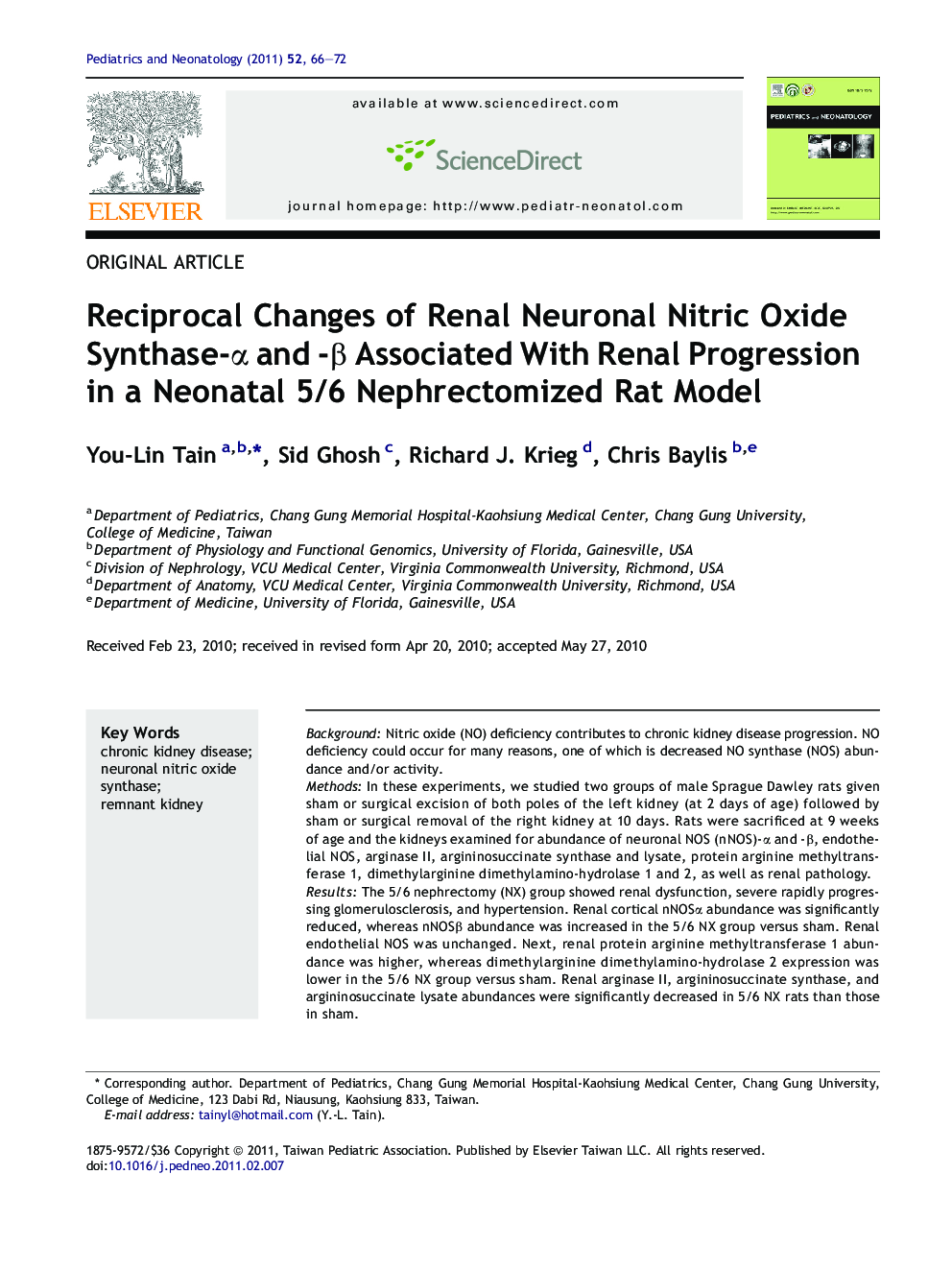| Article ID | Journal | Published Year | Pages | File Type |
|---|---|---|---|---|
| 4175232 | Pediatrics & Neonatology | 2011 | 7 Pages |
BackgroundNitric oxide (NO) deficiency contributes to chronic kidney disease progression. NO deficiency could occur for many reasons, one of which is decreased NO synthase (NOS) abundance and/or activity.MethodsIn these experiments, we studied two groups of male Sprague Dawley rats given sham or surgical excision of both poles of the left kidney (at 2 days of age) followed by sham or surgical removal of the right kidney at 10 days. Rats were sacrificed at 9 weeks of age and the kidneys examined for abundance of neuronal NOS (nNOS)-α and -β, endothelial NOS, arginase II, argininosuccinate synthase and lysate, protein arginine methyltransferase 1, dimethylarginine dimethylamino-hydrolase 1 and 2, as well as renal pathology.ResultsThe 5/6 nephrectomy (NX) group showed renal dysfunction, severe rapidly progressing glomerulosclerosis, and hypertension. Renal cortical nNOSα abundance was significantly reduced, whereas nNOSβ abundance was increased in the 5/6 NX group versus sham. Renal endothelial NOS was unchanged. Next, renal protein arginine methyltransferase 1 abundance was higher, whereas dimethylarginine dimethylamino-hydrolase 2 expression was lower in the 5/6 NX group versus sham. Renal arginase II, argininosuccinate synthase, and argininosuccinate lysate abundances were significantly decreased in 5/6 NX rats than those in sham.ConclusionThe neonatal kidney is very susceptible to 5/6 NX-induced injury, and, as in adults, reciprocal changes in the nNOSα and nNOSβ in renal cortex occur during progression of chronic kidney disease and may contribute to the injury.
